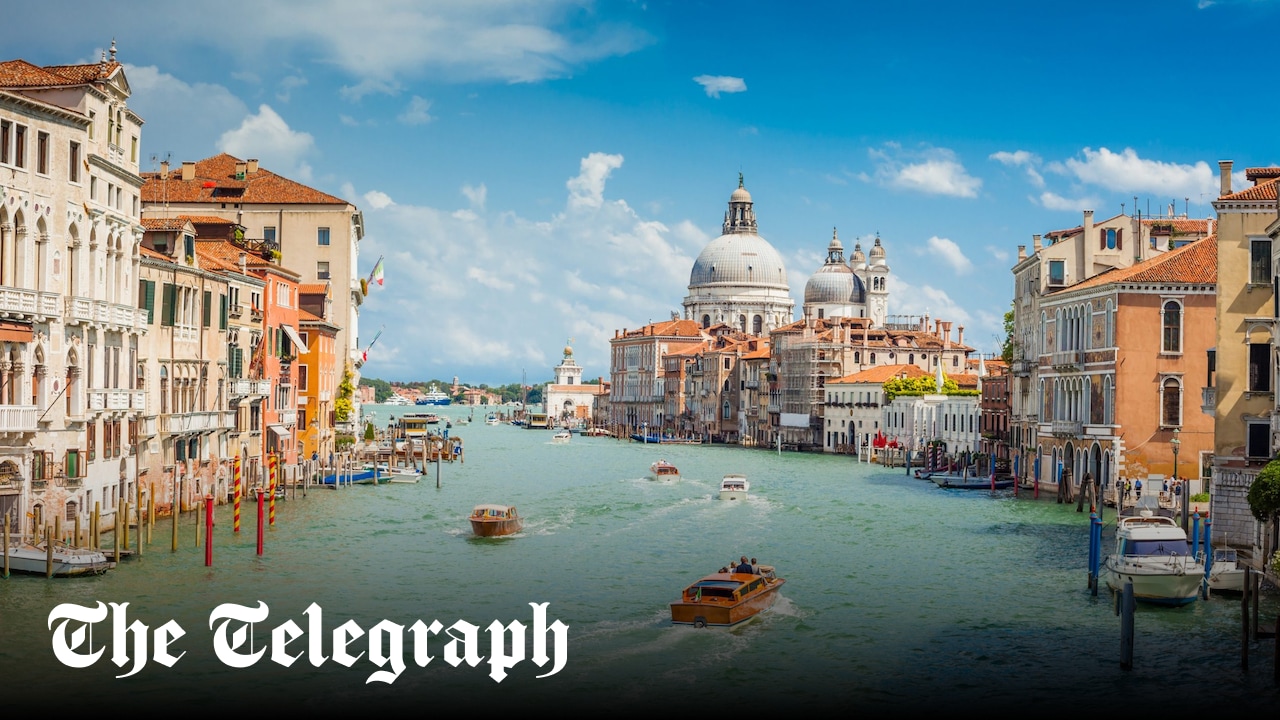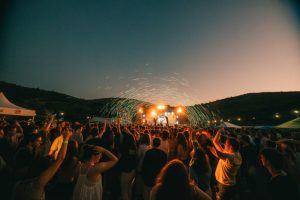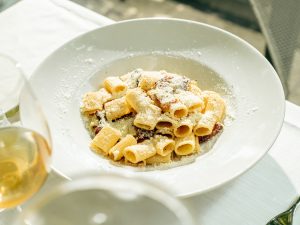Our expert guide details how to best spend a weekend in the Floating City
Copy link
twitter
facebook
whatsapp
email
Copy link
twitter
facebook
whatsapp
email
Copy link
twitter
facebook
whatsapp
email
Copy link
twitter
facebook
whatsapp
email
There are days when visitors to this exquisite jewel box of a city outnumber locals two-to-one, and when getting from the station to St Mark’s Square is a battle. But despite this, Venice never loses its capacity to enchant: stepping out of the station to be greeted by a glittering canal with the dome of San Simeon Piccolo beyond remains heart-stopping, whether you’re doing it for the first time or the 100th.
Even at peak visitor periods, the worst excesses can be avoided and you’re never more than a bridge away from secluded Venice with its quiet campi (squares), churches concealing luminous Madonnas, handsome Gothic palazzi – and bustling neighbourhood hangouts.
Because there’s more to Venice than peerless artistic riches from centuries past: it’s also a hive of contemporary activity (not to mention its recent role playing host to the wedding of the century). Beyond the alternating Art and Architecture Biennale shows, which showcase all that’s cutting edge internationally, the city’s dwindling population works hard to keep contemporary Venice creative, productive and very vibrant.
For further inspiration, explore our guides to the city’s best hotels, restaurants, nightlife, shopping, attractions and free things to do.
Le Stanze della Fotografia, on the island of San Giorgio, is hosting the striking, provocative and occasionally shocking works of American photographer Robert Mapplethorpe. This major exhibition examines the sensuality of the human body, the beauty of flowers and the dialogue between photography and classical sculpture, and is running from April 10 to November 23.
Venice’s tantalising gardens are mostly behind high walls, in private hands. The Hortus Redemptoris – a glorious hectare of vegetable and herb beds behind Palladio’s superb Redentore church on Venice’s Giudecca island – has been restored and opened to the public last autumn. It’s open from Thursdays to Saturdays, between 10am and 5.30pm.
Intelligence in various forms – natural, artificial and collective – is the theme of this year’s international architecture exhibition, running from May 10 to November 25, from the Biennale organisation. Architects and designers from 66 countries push the bounds of conceptual research in exhibits inside Venice’s Arsenale and in the charming national pavilions dotted around the Giardini della Biennale.
Return to index
Start the day in Da Bonifacio, a tiny café with a lovely crazy-paving mosaic floor, hidden away behind the Doge’s Palace. The coffee’s good – ask for the very Venetian macchiatone if you like the idea of a cappuccino with less milk – and it’s difficult to resist cakes like the pasta con le mandorle (almond slice).
The wondrous, mosaic-studded interior of Venice’s mother church, St Mark’s Basilica doesn’t open to visitors until 9.30am (2.30pm on Sunday), but anyone is welcome to attend morning mass. Take your pick between the 8am and 10am slots.
On Sundays and feast days, the 10am event is a sung mass in the central nave, and there’s nothing like plainsong to bring out the magic of St Mark’s. Afterwards, visit the Museum of St Mark’s, which affords spectacular views over the piazza; entry is €7.
If you are looking for a properly Venetian lunch experience, with traditional dishes such as bigoli in salsa (thick spaghetti in anchovy and onion sauce) or sardine in saor (sweet and sour sardines), Al Portego will deliver. There are only a handful of tables – so book – plus space to perch at the bar and graze on a wide selection of cicchetti (bar snacks), which is what locals do.
Take a stroll through the Castello district, leaving the tourist hordes behind, until you reach the Scuola di San Giorgio degli Schiavoni. After the opulence of St Mark’s, indulge in one of the city’s most charmingly intimate cultural draws: an early 16th-century cycle of paintings by local artist Vittore Carpaccio narrating episodes from the life of Dalmatia’s three patron saints, George, Tryphon and Jerome.
The paintings are emerging from the gloom in their glorious original colours thanks to an ongoing restoration programme financed by Save Venice Inc.
Cross the Rialto Bridge to the market area, and join the fun by grabbing a spritz at hole-in-the-wall bar Al Mercà, and munching on a few cicchetti – go for baccalà mantecato (creamed salt cod), mantis prawns, or schie (small grey shrimps).
Wrap the day up by hopping back on vaporetto 1 towards piazzale Roma, and disembark at San Marcuola. From here, wend your way through narrow alleys to the delightfully untouristy northern stretches of Cannaregio, where funky trattoria Anice Stellato does excellent creative Venetian cuisine, along with good-value house wines.
Enjoy a morning stroll along the scenic Riva degli Schiavoni waterfront promenade and hop on the number 2 vaporetto at the San Marco – San Zaccaria stop. Get off at the island of San Giorgio Maggiore, and take the lift to the top of the church’s 18th-century campanile to enjoy a another spectacular view of Venice and its lagoon.
Take the number 2 again and get off at Zattere, from where it’s a short walk to the Accademia gallery, a vast repository of magnificent Old Masters. Look out for Vittore Carpaccio’s frantic Miracle of the Cross at the Rialto. The bridge has changed but the water-borne confusion beneath is instantly recognisable.
If the Tintorettos and Bellinis don’t do for you, the Peggy Guggenheim Collection offers a more modern roster of works by mostly European artists from Picasso to Matisse, assembled by the eccentric American heiress in the mid-20th century. The gallery’s pretty, artsy café is a sophisticated spot for a tea or coffee break. The garden’s lovely too.
When hunger calls, make a beeline back to the Zattere and chalet bar El Chioschetto, where you can sit outside watching the boats ply the Giudecca Canal while munching on a piadina – a sort of flatbread pizza – or a salad.
No Venetian day would be complete without an hour or so of downtime where you just wander without a real destination. Dorsoduro is a good place to indulge the habit. This artsy, studenty district is full of quirky shops such as mask-making workshop Ca’ Macana, where Stanley Kubrick went to get the masks for his film Eyes Wide Shut.
A short walk away in campo San Polo, the Gothic I Frari church contains truly sumptuous artworks. Titian’s dramatic, intensely spiritual Assumption of the Virgin (dating to 1518) over the high altar dominates.
The area between Frari and Zattere – in particular campo Santa Margherita and the narrow streets behind San Pantalon – is a fashionable but secluded evening favourite for those in the know.
Favourites include aperitivo haunts Malvasia all’Adriatico Mar and Estro Vino e Cucina, run by a young group with a passion for natural wine and a Slow Food approach to eating. After dinner, Il Mercante is a great place for a sophisticated nightcap.
Return to index
Planning to stay longer?
Venice is a unique, magical place 365 days a year. But much of the time you’ll be sharing that magic with thousands of other visitors. Numbers peak in summer, despite the heat, humidity and swarms of mosquitoes. Spring and autumn are much more pleasant months. I especially like late autumn (mid-October to mid-November) when, if you’re lucky with the weather, it can still be warm enough to eat outside.
But my favourite season of all is winter, a time of misty vistas when tourists are few and far between, rooms are cheap and the city is reclaimed by Venetians.
An exception is Carnevale, in the two weeks leading up to Shrove Tuesday (February/March), which brings in hordes of revellers and sends accommodation prices through the roof. Other regular annual events include the June-November Art Biennale (even years) and Architecture Biennale (odd years), the Film Festival (10 days end of August to early September) and local festivities like the Festa del Redentore on the third weekend in July, when the city and lagoon are lit up by fireworks.
Return to index
Gritti Palace, a 15th-century palazzo, is situated on the most eye-catching stretch of the Grand Canal, looking across the water to Santa Maria della Salute and to the Palazzo Venier dei Leoni, home to the Peggy Guggenheim Collection. The entire building, including the rooms, house hundreds of precious paintings and other artefacts. Staff are charming and there’s a small spa. The Club del Doge restaurant has one of the most beautiful dining rooms in this or any other city.
Read our full review here.
An effortlessly elegant mix of antique and modern, the five-room Cima Rosa is the extremely stylish creation of an Italian architect and American decorator couple. Rooms and suites are all beautifully decorated in Farrow & Ball pastels that pick up Venice’s water colours and enhance the classic-contemporary elegance. The sateen bed linen is luxurious; the well-equipped bathrooms are delightful. Three rooms have Grand Canal views.
Double rooms from €275 (£235)
Read our full review here.
Rooms in the main part of the Al Ponte Mocenigo cluster around a delightful courtyard with ancient columns and a lovely antique well head. The look is classic Venetian with a contemporary twist; the feel is laid-back and very friendly. An annexe has eight more rooms but has less of the affable air generated by the outdoor space, Turkish bath, and bar and front desk facilities next door.
Read our full review here.
Return to index
Where to stay
Anne has lived in Italy for almost 40 years – first in Rome, now deep in the Umbrian countryside. But her first love is Venice, where she still manages to lose herself in the beautiful backstreets.




